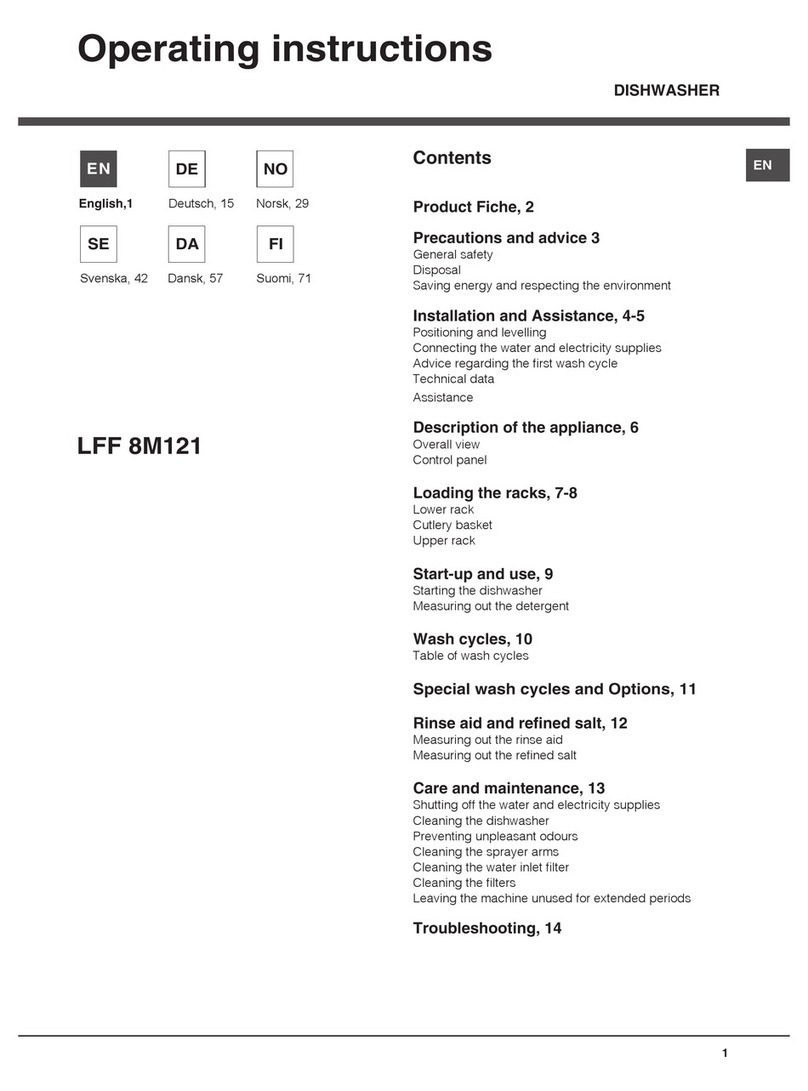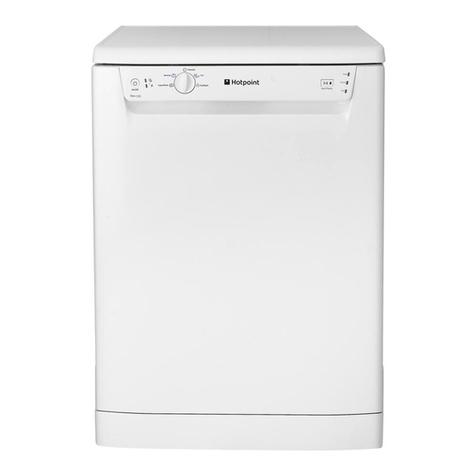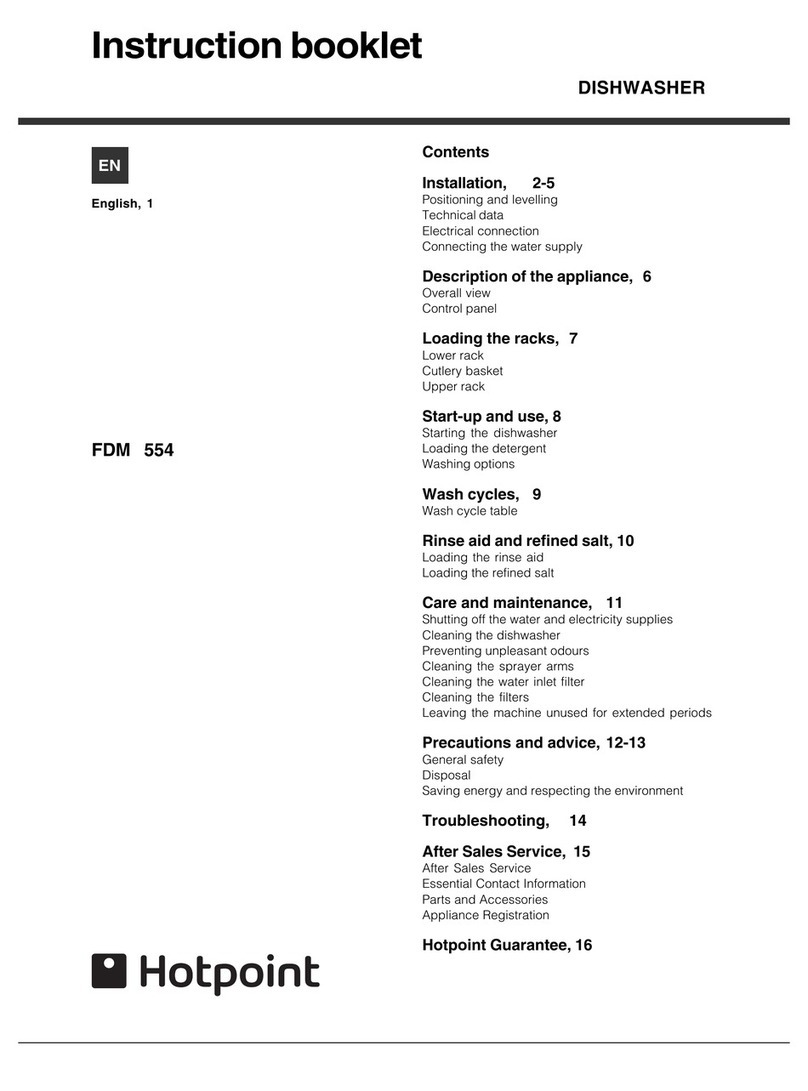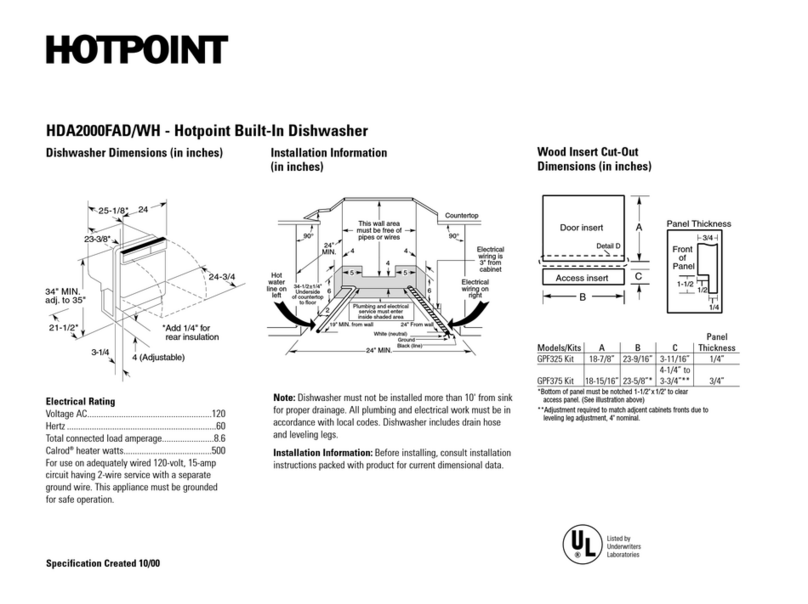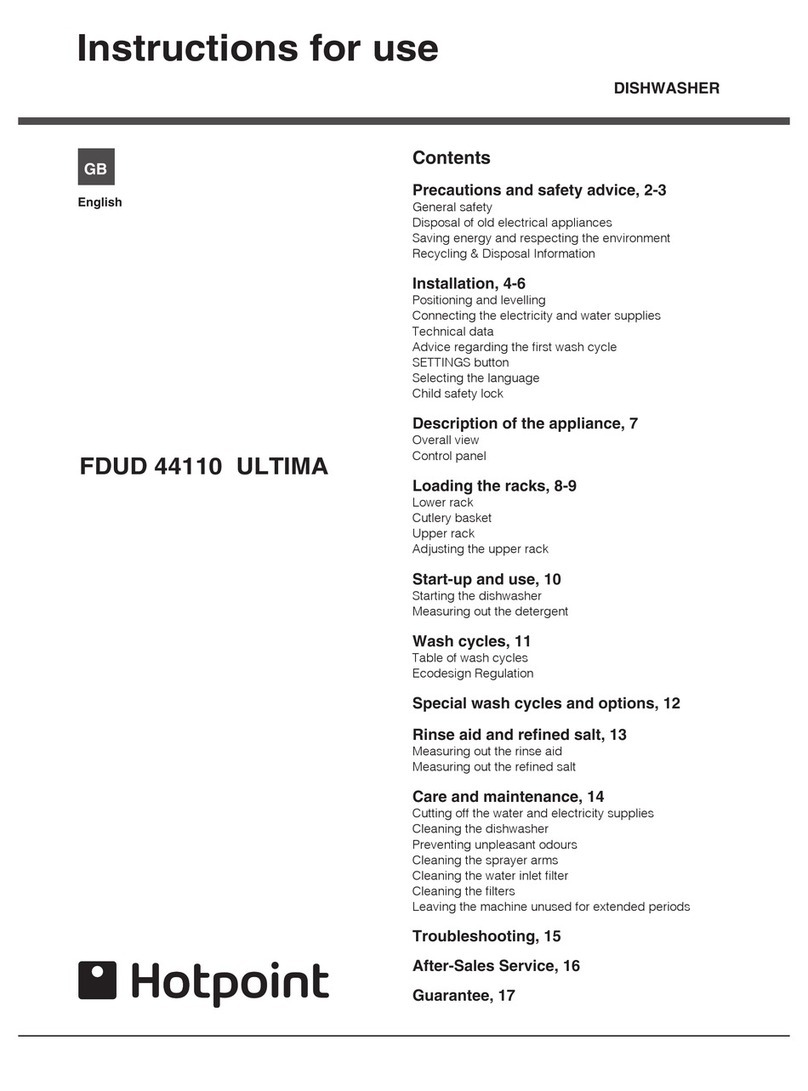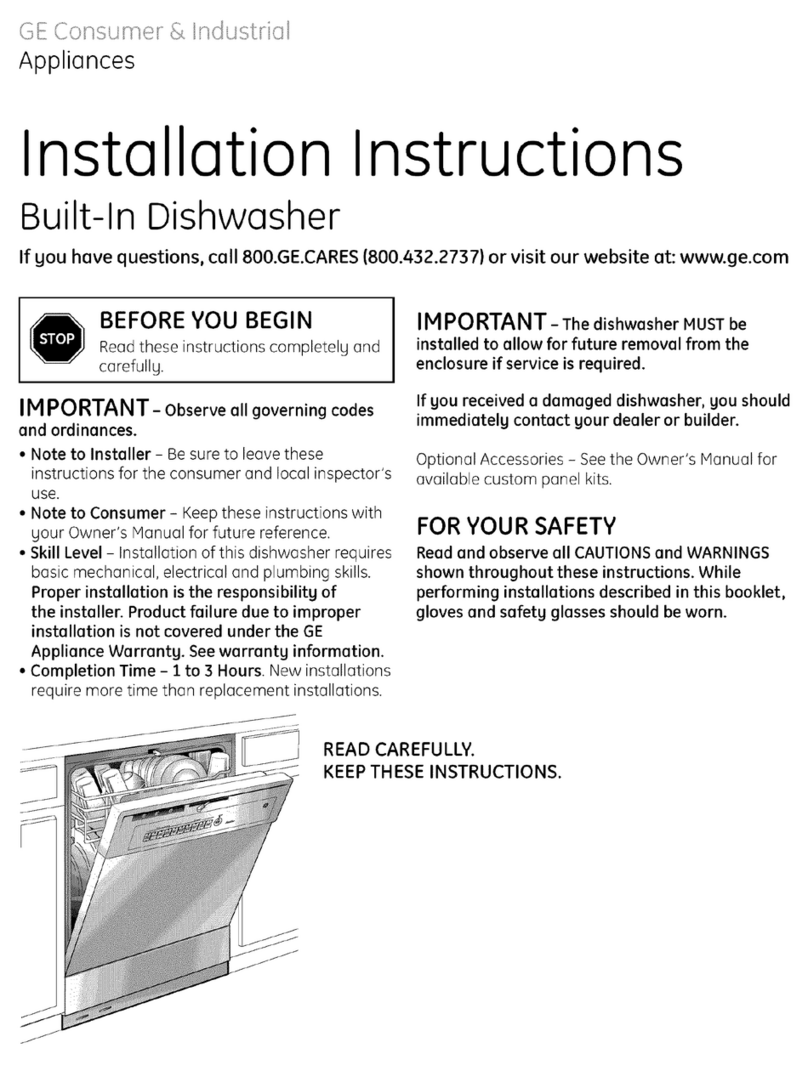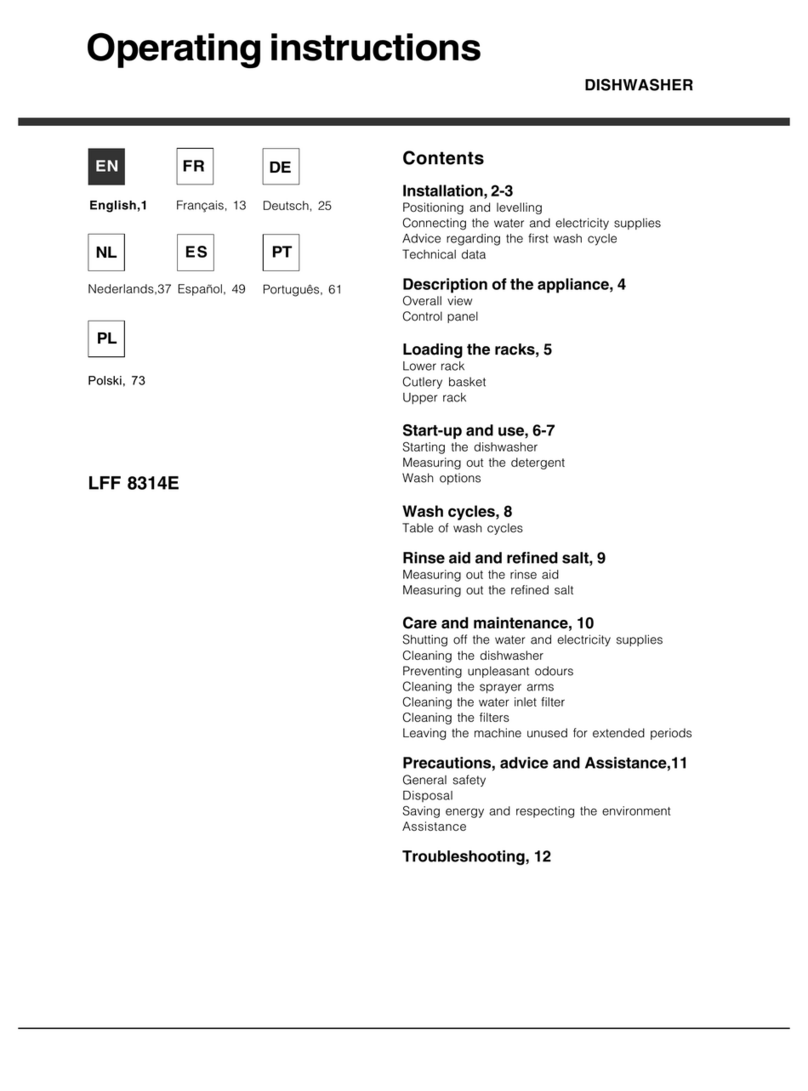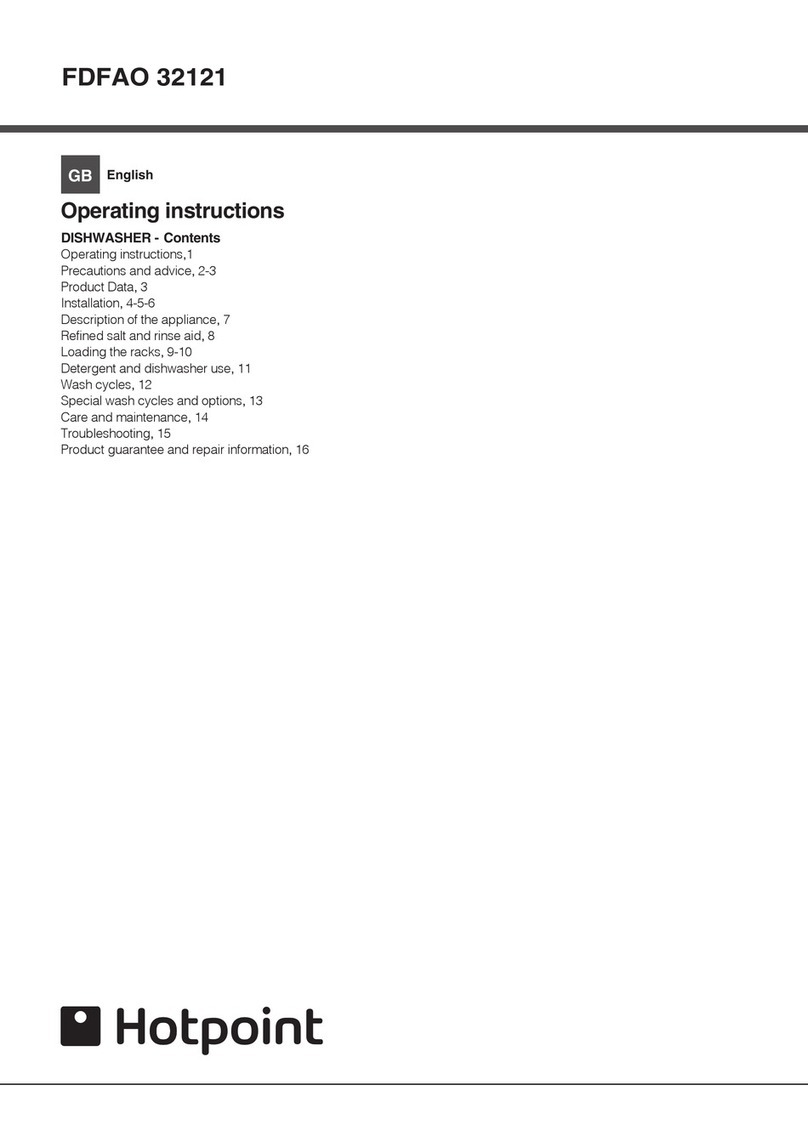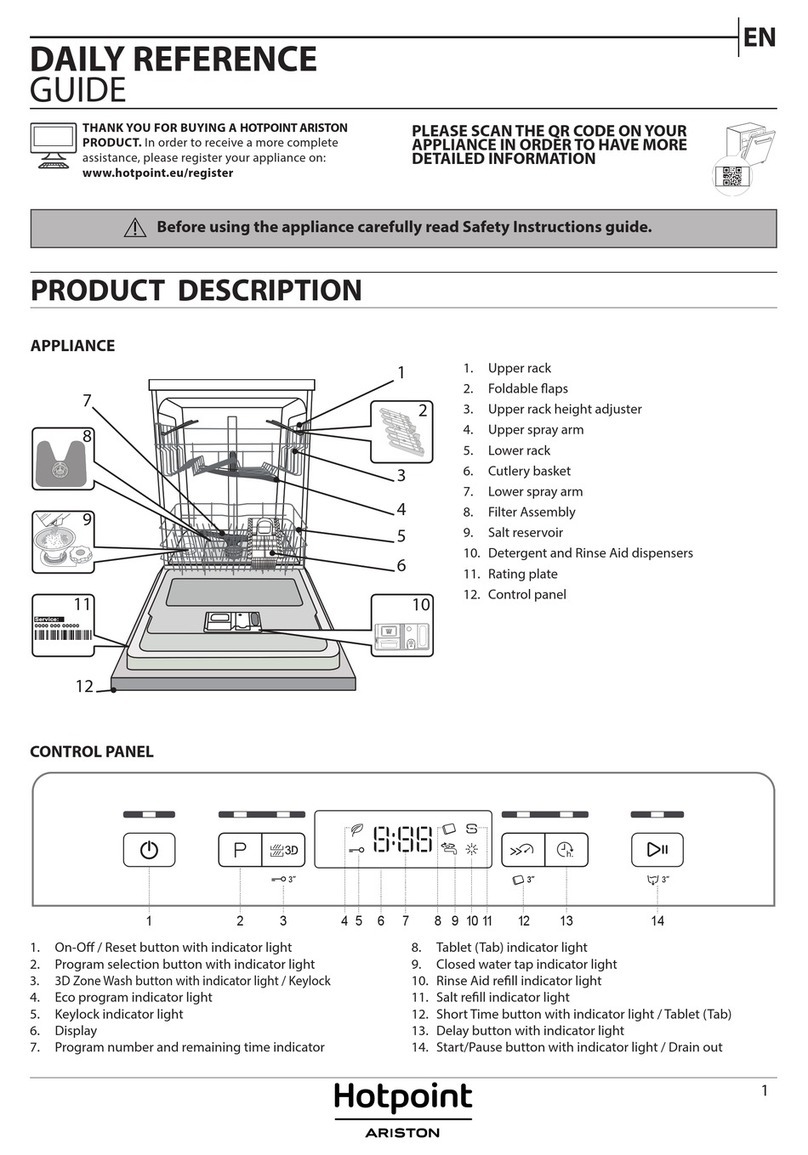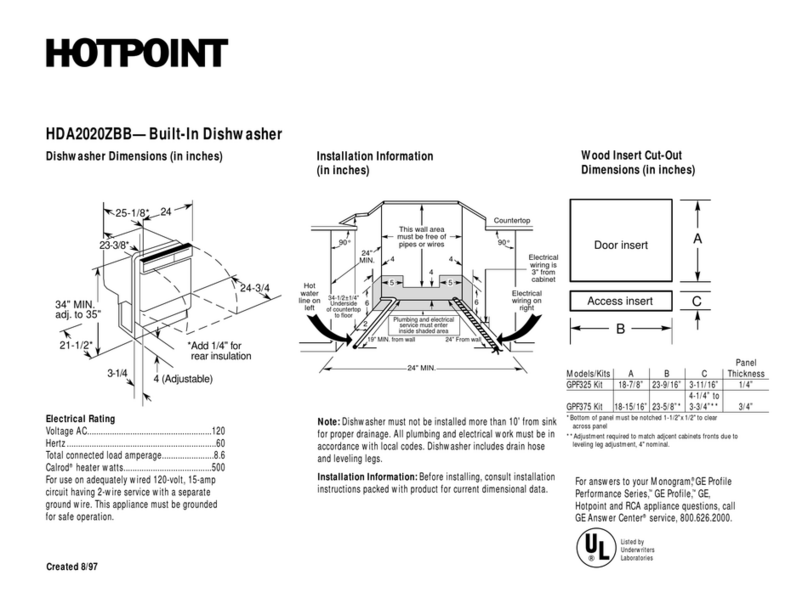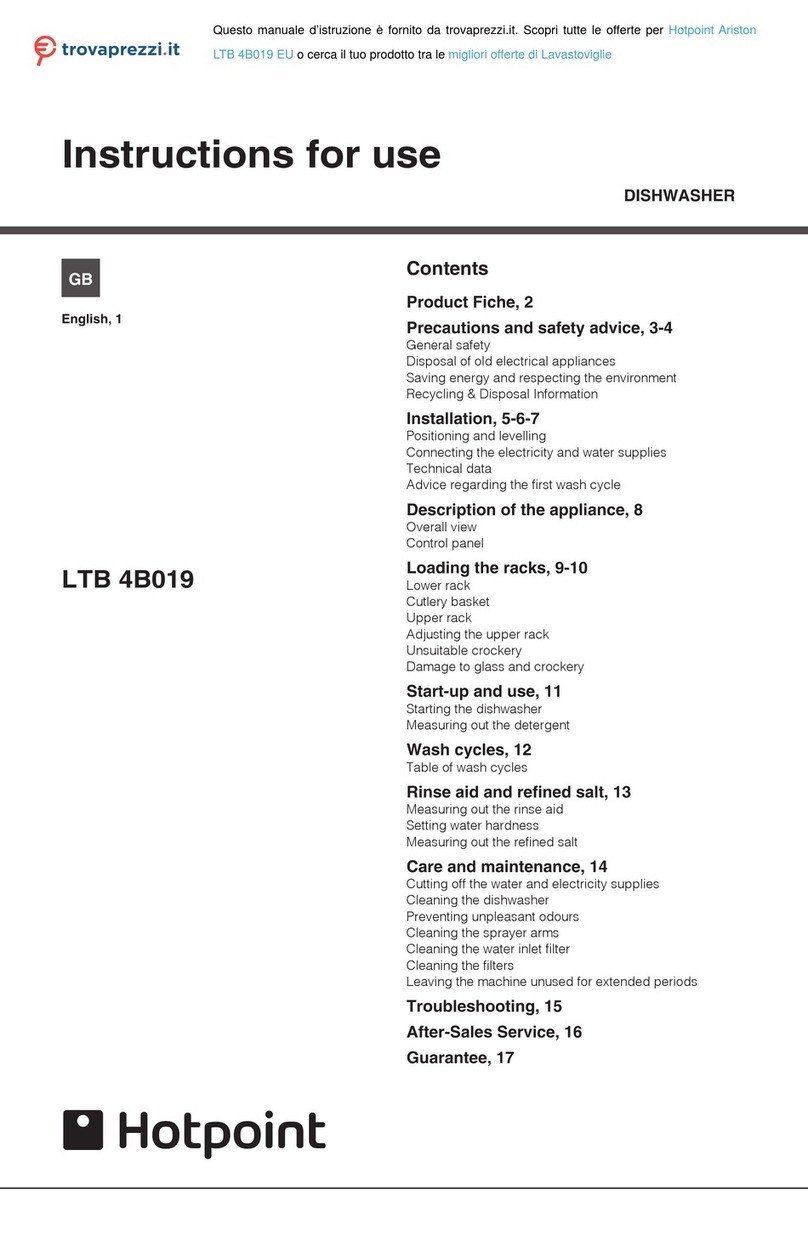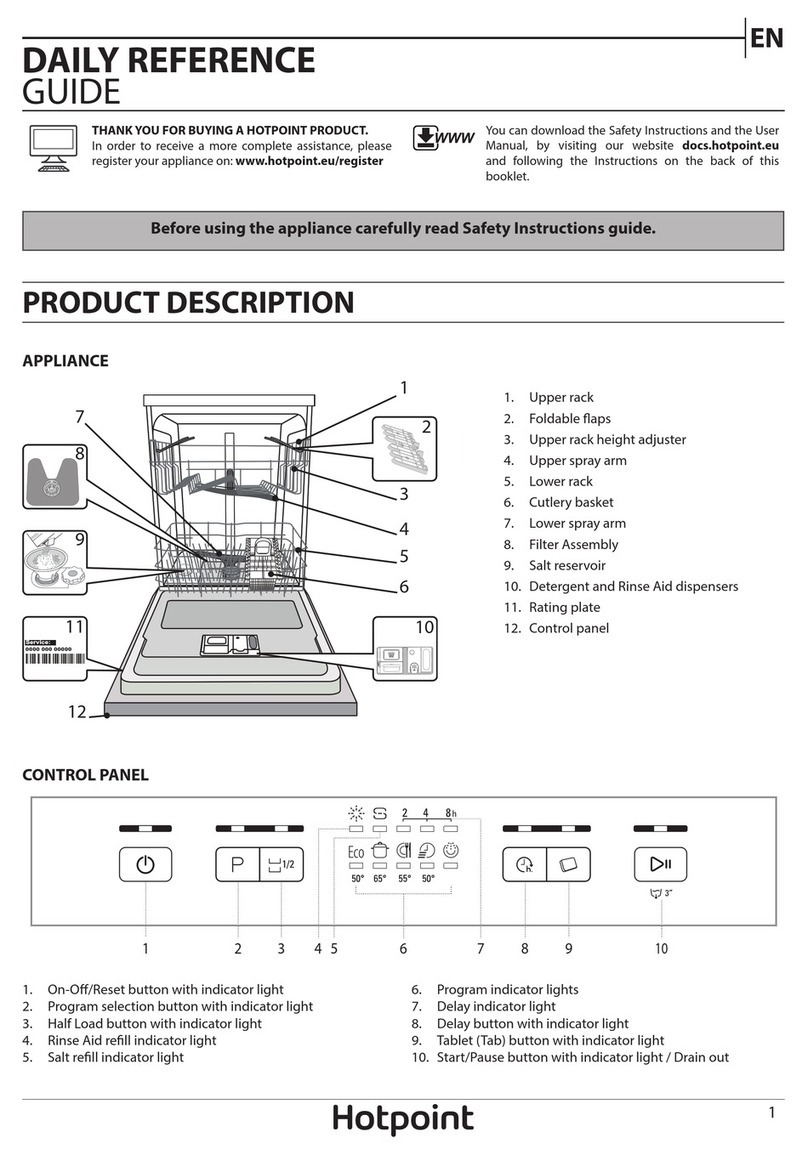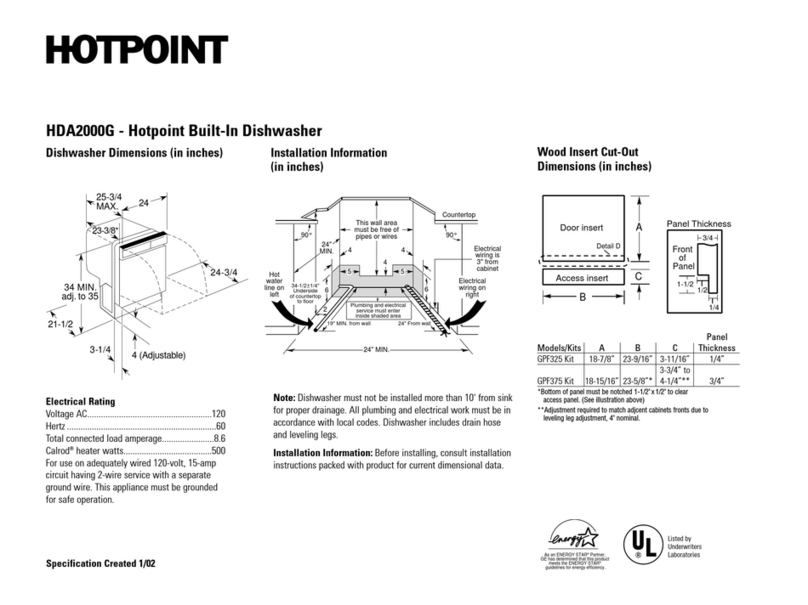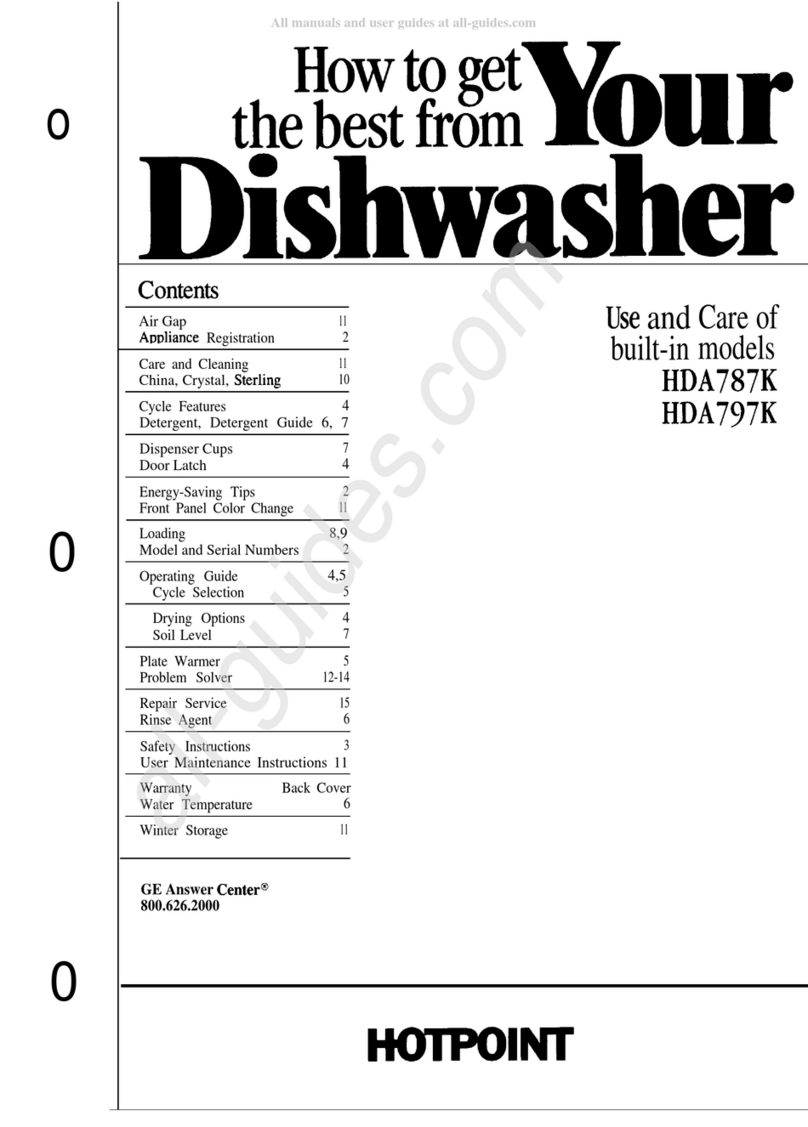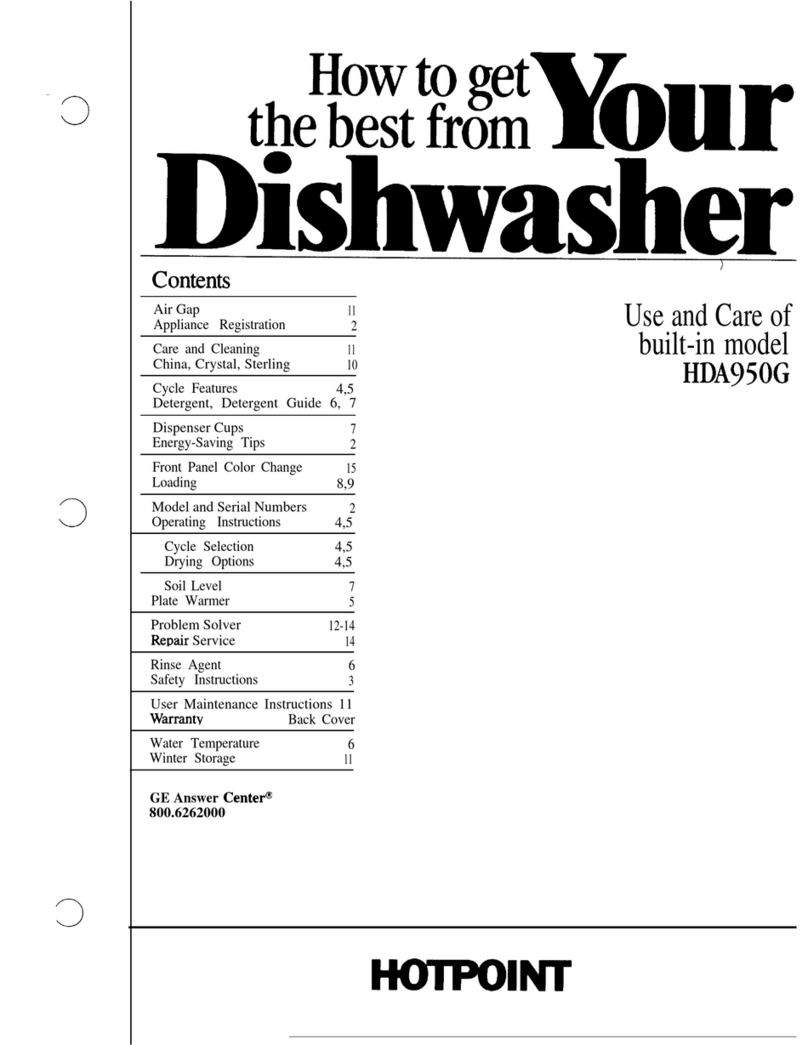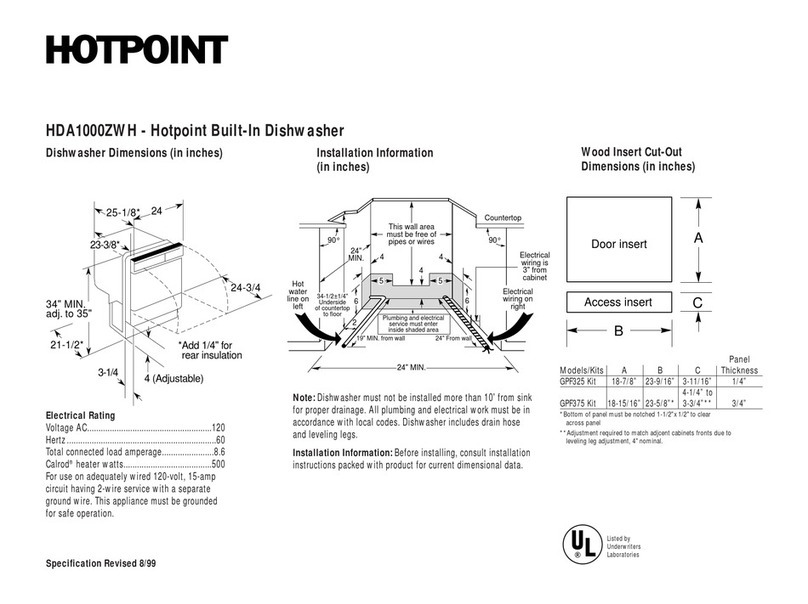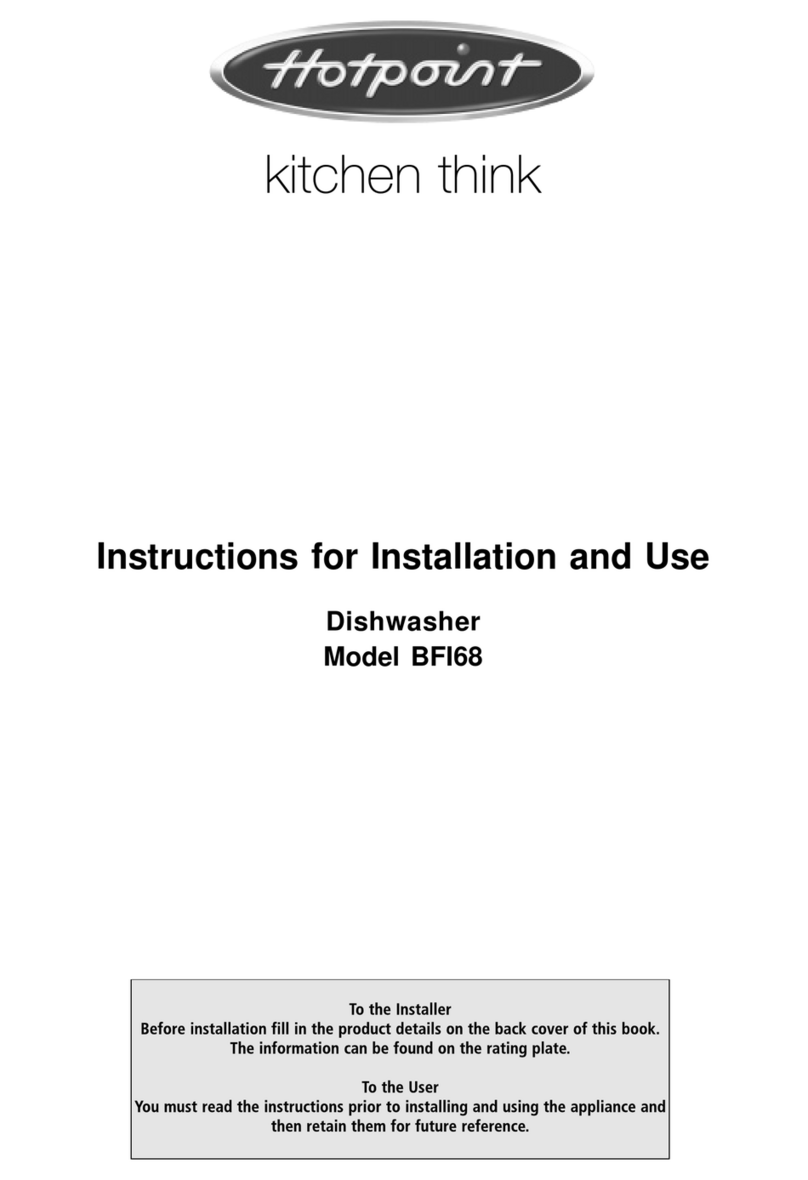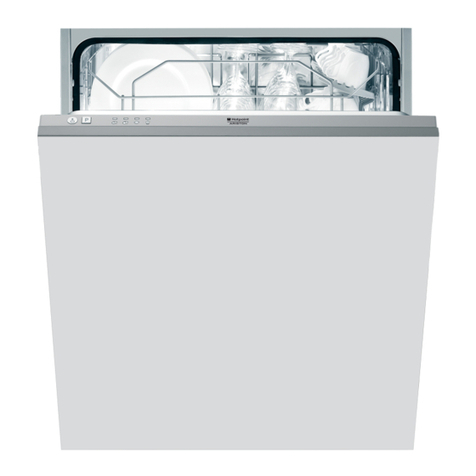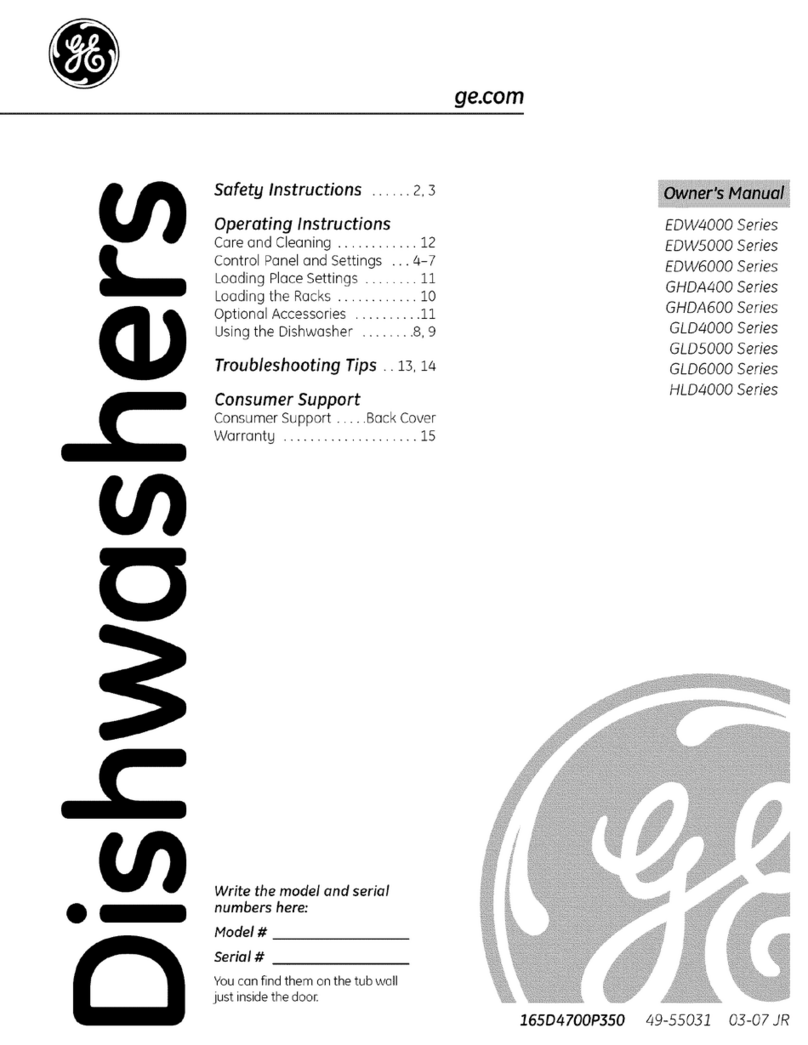EN
9
Rinse aid and refined salt
G
F
Onlyuseproducts which havebeenspecifically designed
for dishwashers.
Do not use table salt or industrial salt, or washing up liquid.
Follow the instructions given on the packaging.
If using a multi-functional product it is not necessary to add
rinseaid;however,werecommend that youaddsalt, especially
if you live in an area where the water is hard or very hard.
Followthe instructions given on the packaging.
If you do not add salt or rinse aid, the LOW SALT*and
LOW RINSE AID*indicator lights remain lit.
Measuring out the rinse aid
Rinse aid makes it easier for the crockery to dry, as water runs
offsurfacesmorereadilyandthereforedoesnotleavestreaksor
marks.
The rinse aid dispenser should be filled:
•When the LOW RINSE AID*indicator light on the control
panelisilluminated; 1. Open the dispenser by turning the
lid(G) in an anticlockwise direction.
2.Pour in the rinse aid, making sure it
doesnotoverflowfromthedispenser.
If this happens, clean the spill
immediatelywitha dry cloth.
3. Screw the lid back on.
NEVER pour the rinse aid directly
into the appliance tub.
Adjusting the amount of rinse aid
If you are not completely satisfied with the drying results, you
may adjust the quantity of rinse aid used. Use a screwdriver to
turnthedosageadjuster(F)toone of the 6 pre-set positions (the
default position is set to 4):
• If there are streaks on the crockery, set the adjustment device
to a lower number (1-3).
•Ifdropsof water remain on thecrockeryorifthereare limescale
markspresentafterthecyclehasfinished,settheadjustertoa
higher number (4-6).
Setting the water hardness
Every dishwasher is equipped with a water softener which, by
usingrefinedsaltdesigned especially for this type of appliance,
supplieswater without limescale which is then usedto wash the
crockery.
Thisdishwasher offers a setting which helpsto reduce pollution
andoptimiseswashingperformanceinaccordance withthewater
hardness level in your area. This information can be obtained
fromtheorganisationwhichsuppliesyourhouseholdwithwater.
The water hardness adjustment procedure may vary
depending on the dishwasher model purchased.
- Switch on the appliance by pressing the ON/OFF button.
- Press and hold the Pbutton for a few seconds; after a short
beep sounds, the water hardness setting will appear on the
displayandtheStart/Pausebuttonwillbeginto flash (the default
water softening system setting is level 33
33
3).
- Press the Pbutton repeatedly until the desired hardness level
has been reached (1-2-3-4-5*
see Water hardness table
). The
selected water hardness value will appear on the display.
E.g.: hardness setting 1 ("1" appears on the display);
hardness setting 2 ("2" appears on the display);
hardnesssetting3 ("3" appears on the display); etc., etc. up to a
maximumoflevel5.
To exit the function, wait a few seconds or press one of the
option buttons*, or switch off the machine using the ON/OFF
button.
Even if using multi-functional tablets, the salt dispenser should
stillbefilled.
(°dH = hardness measured in German degrees - °f = hardness
measuredin French degrees - mmol/l = millimolesper litre)
Measuring out the refined salt
Inordertoachievethebestpossibleresultsusingawashcycle,
makesure thatthedispenserisnever empty.Refinedsaltremoves
limescalefromthewater,thus avoiding the formation of deposits
on crockery.
Thesalt dispenser is located in the lower part ofthedishwasher
(
see Description
)andshould be filled:
• Whenthegreenfloat*cannotbeseenbysimplylookingatthe
cap of the salt dispenser.
• When the LOW SALT*indicator light on the control panel is
illuminated; 1. Remove the lower rack and unscrew the
containercap(anticlockwise).
2.Thefirsttime you dothis:fillthewater tank
right up to its edge.
3. Position the funnel*(
see figure)
and fill
the salt container right up to its edge (this
shouldholdapproximately1kg);itis not unusual for a little water
toleak out.
4. Remove the funnel* and wipe any salt residue away from the
opening;rinsethecapunder running water and then screwiton,
thehead facing downwards so as tolet the water flow out ofthe
fourcrackswhicharearrangedina star shape on the lower part
ofthe cap. (the container cap withthe green float*)
It is advisable to perform this procedure every time you add
salt to the container.
Make sure the cap is screwed on tightly, so that no detergent
can get into the container during the wash cycle (this could
damage the water softener beyond repair).
When necessary, measure out the salt before awashcycle
so that any saline solution which has leaked out of the salt
dispenser is removed.
*Only available in selected models.
Water Hardness Table Average salt container
capacity duration**
Level °dH °fH mmol/l months
1 0 - 6 0 - 10 0 - 1 7 months
2 6 - 11 11 - 20 1,1 - 2 5 months
3 12 - 17 21 - 30 2,1 - 3 3 months
4 17 - 34 31 - 60 3,1 - 6 2 months
5*
34 - 50
61 - 90
6,1 - 9
2/3 weeks
For values between 0°f and 10°f, we do not recommend the
use of salt.* this setting may cause a slight increase in the
duration of the cycles. **for 1 wash cycle per day.
